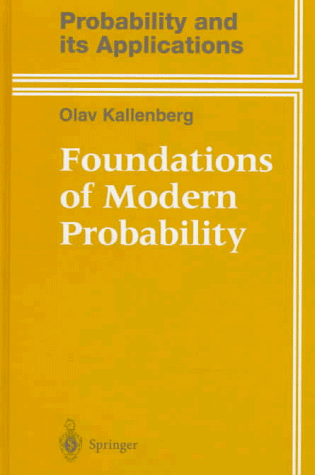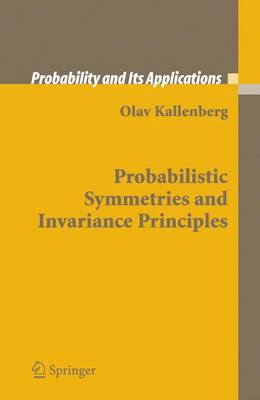Probability and Its Applications
2 total works
This book is unique for its broad and yet comprehensive coverage of modern probability theory, ranging from first principles and standard textbook material to more advanced topics. In spite of the economical exposition, careful proofs are provided for all main results. Though primarily intended as a general reference for researchers and graduate students in probability theory and related areas of analysis, the book is also suitable as a text for graduate and seminar courses on all levels, from elementary to advanced. Numerous easy to more challenging exercises are provided, especially for the early chapters.
This book is about random objects-sequences, processes, arrays, measures, functionals-with interesting symmetry properties. Here symmetry should beunderstoodinthebroadsenseofinvarianceunderafamily(notnecessarily a group) of measurable transformations. To be precise, it is not the random objects themselves but rather their distributions that are assumed to be symmetric. Though many probabilistic symmetries are conceivable and have been considered in various contexts, four of them-stationarity, contractability, exchangeability, and rotatability-stand out as especially interesting and - portant in several ways: Their study leads to some deep structural theorems of great beauty and signi?cance, they are intimately related to some basic areasofmodernprobabilitytheory, andtheyaremutuallyconnectedthrough a variety of basic relationships. The mentioned symmetries may be de?ned as invariance in distribution under shifts, contractions, permutations, and rotations. Stationarity being a familiar classical topic, treated extensively in many standard textbooks and monographs, most of our attention will be focused on the remaining three basic symmetries.
The study of general probabilistic symmetries essentially originated with the work of de Finetti (1929-30), who proved by elementary means (no - vanced tools being yet available) the celebrated theorem named after him- the fact that every in?nite sequence of exchangeable events is mixed i.i.d.
The study of general probabilistic symmetries essentially originated with the work of de Finetti (1929-30), who proved by elementary means (no - vanced tools being yet available) the celebrated theorem named after him- the fact that every in?nite sequence of exchangeable events is mixed i.i.d.

